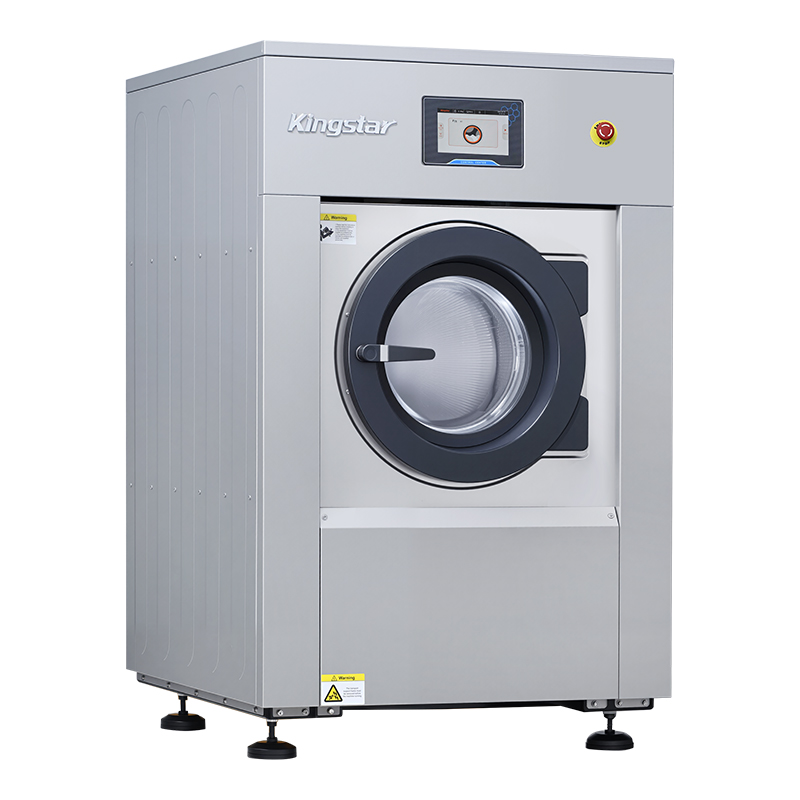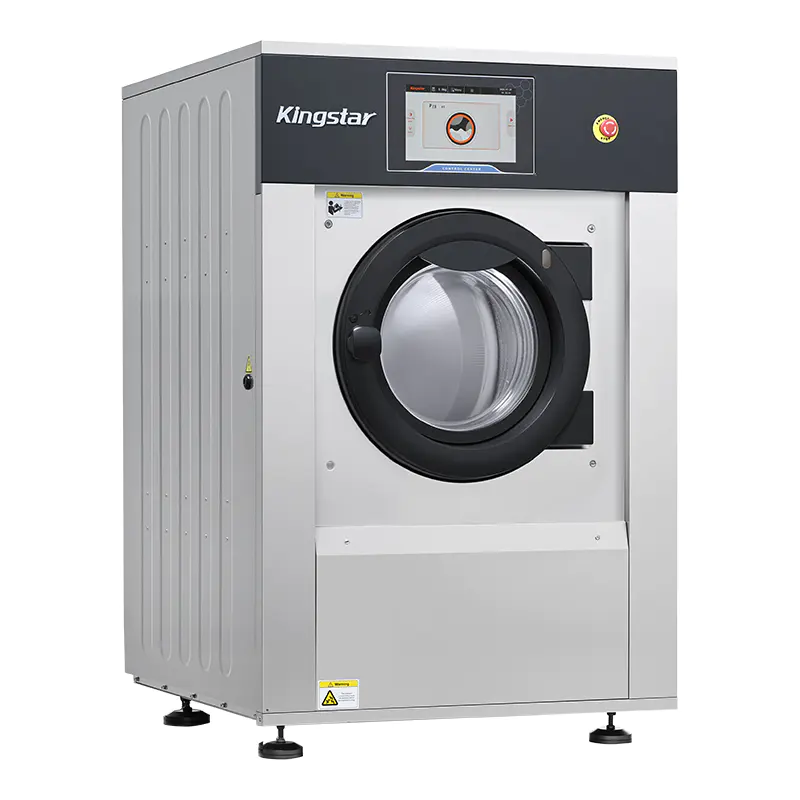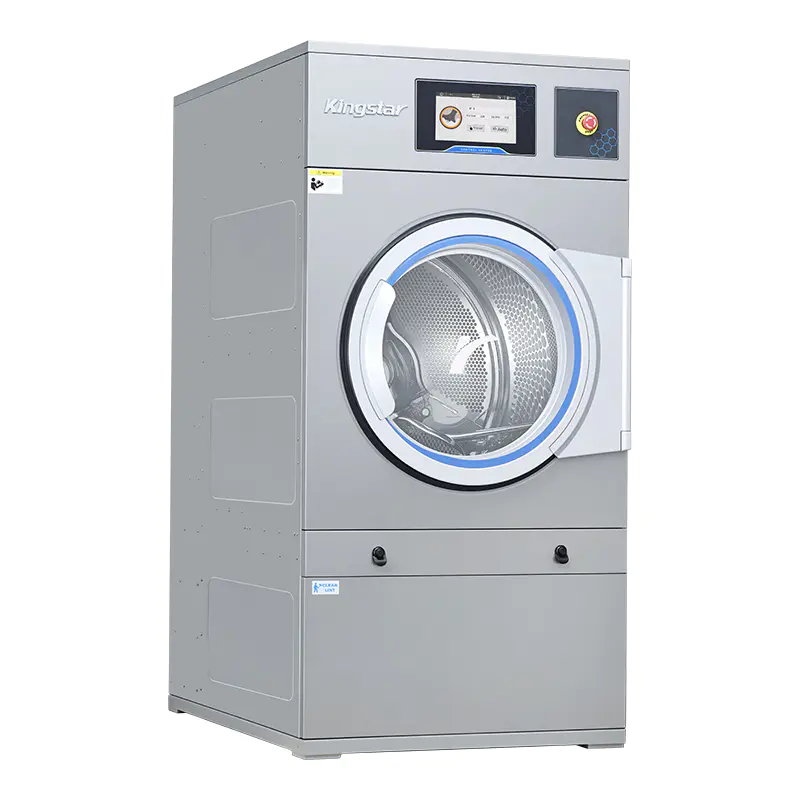
Shrinkage Rates of Common Textile Fabrics and Prevention Methods for Laundries
Shrinkage of clothes is the common problems that bothers many laundries. The shrinkage characteristics of different fabrics vary. Generally speaking, synthetic fibers and blended textiles have the smallest shrinkage rates, followed by wool and linen fabrics, with cotton fabrics in the middle. Silk fabrics shrink more, while fabrics made of viscose fiber, artificial cotton, and artificial wool have the largest shrinkage rates. Almost all pure cotton fabrics may shrink and fade. Generally, clothing manufacturers will subject clothes to preshrinking treatment. However, clothes that have undergone such treatment are not completely shrink-proof. Instead, their shrinkage rates are controlled within the standard range. Improper washing processes may still cause severe shrinkage.
Shrinkage Rates of Common Fabrics
Synthetic fibers (polyester, nylon...): 1-3%
Blended fabrics: 2-4%
Wool fabrics: 3-5%
Linen fabrics: 3-5%
Cotton fabrics: 4-7%
Silk: 5-8%
Viscose fiber: 8-10%
Artificial cotton: 8-10%
Artificial wool: 8-10%
Canvas: about 5-8%
● Reasons for shrinkage
Shrinkage of clothes mainly stems from four factors: the inherent properties of fibers, excessive mechanical force during washing, fiber swelling during soaking, and heat-induced shrinkage. Fibers swell when absorbing water, typically shortening in length and increasing in diameter. Fibers with stronger water absorption capacity have higher shrinkage rates and poorer dimensional stability.
● Before washing clothes, laundries need to understand the following two aspects first:
- Understand fabric composition
Synthetic fiber blended products have low shrinkage rates. Fabrics with 5-10% cotton or linen blended with synthetic fibers also have relatively low shrinkage rates.
- Pay attention to fabric density
High-density fabrics generally have lower shrinkage rates than loose ones. Check if the fabric texture is tight because those with poor light transmittance are usually denser.
Correct Washing Methods
● Water temperature control
Cotton and linen fabrics: Water temperature ≤ 40℃
Silk and wool fabrics: Wash in cold water (temperature ≤ 30℃)
Synthetic fibers: Wash at room temperature
For clothes of any fabric, avoid using excessively hot water because high temperatures will intensify fiber shrinkage.
● Selection of washing methods
- It is recommended to hand-wash valuable clothes with gentle kneading. Programmable wet cleaning machines can also be used, which provide mild mechanical force by reducing rotation speed and cycle ratio, avoiding excessive mechanical force that may cause shrinkage.
- Choose neutral or weakly acidic detergents according to the fabric type to prevent damage to fibers from strong alkalinity.
● Avoid overwashing
- For clothes made of valuable and sensitive fabrics, if only local stains exist, local cleaning can be used instead of overall washing.
- Reduce detergent dosage and rinse thoroughly.
Scientific Drying Techniques
● Selection of drying methods
For shrink-prone clothes, prioritize flat drying (using a drying net if possible); hanging to dry is the next option. Avoid twisting and direct sunlight, or high-temperature tumble drying.
● Specific operation methods
taking out clothes → gently squeeze out water and avoid twisting → Shape them → hang to maintain original dimensions.
When treating silk and wool items, people should avoid heavy hanging to prevent deformation.
● Drying environment
Choose a well-ventilated, cool place, which is away from direct sunlight. A fan can be used to speed up drying, but people should not direct it at the clothes.
Professional Ironing Methods
● Temperature control
Cotton and linen: Medium to high temperature ironing (180-220℃)
Wool fabrics: Medium-temperature ironing (150-180℃), with a damp cloth underneath
Silk: Low-temperature ironing (120-150℃)
Synthetic fibers: Low-temperature ironing (100-130℃)
● Ironing techniques
Slight stretching for recovery: Gently stretch the fabric to its original size while it is slightly damp.
Steam ironing is more effective than dry ironing in restoring dimensions.
People should also avoid ironing the same area for a long time.
Professional Preshrinking Treatments
● For homemade or unpreshrunk fabrics, preshrinking can be done as follows:
Soaking: Soak the fabric in warm water for 2-4 hours → dry it flat.
Steaming: Use a steam iron → steam the entire fabric.
Washing: Wash once before making → cut after complete drying.
● Handling of Special Cases
Restoring shrunken clothes: Soak in warm water with a small amount of fabric softener for 10 minutes → gently stretch to the original size → dry flat.
Wool products: Use special wool detergent for cleaning. (Avoid friction and high temperatures)
Jeans: Wash inside out with cold water. Avoid spin-drying.
Conclusion
By learning the characteristics of different fabrics and taking correct preventive measures, people can completely control the shrinkage problems of the textiles, extend the clothes’ service life, and maintain a good shape. People should remember that prevention is better than cure. Correct care habits are the key to preventing shrinkage.
ADD:No.388 Xinggang Road, Chongchuan District, Nantong City, 226000, Jiangsu Province, China.
-
Phone: +86-13917089379
-
Tel:+86-13917089379
-
Fax:+86-0513-85663366
-
E-mail:[email protected]








